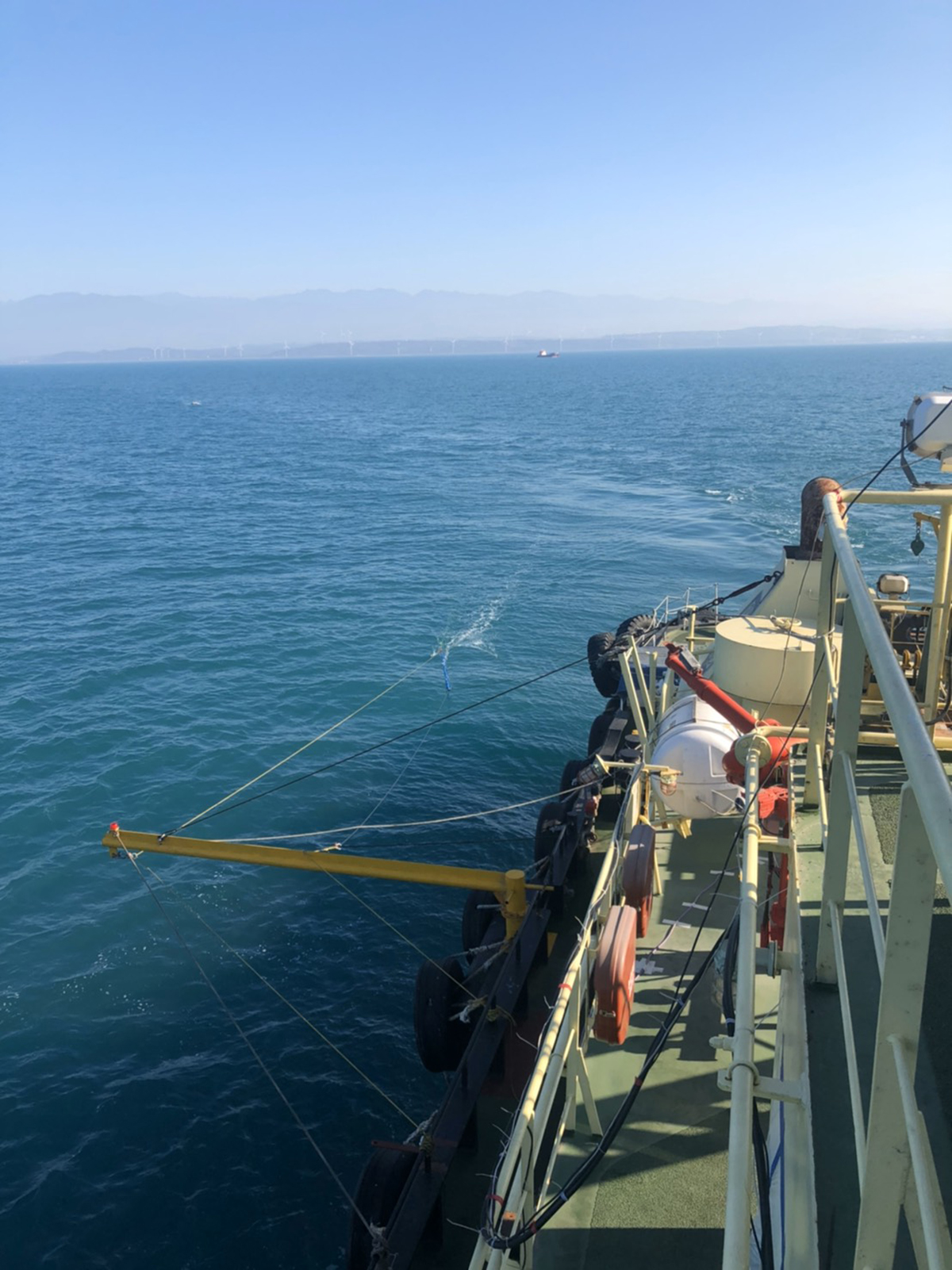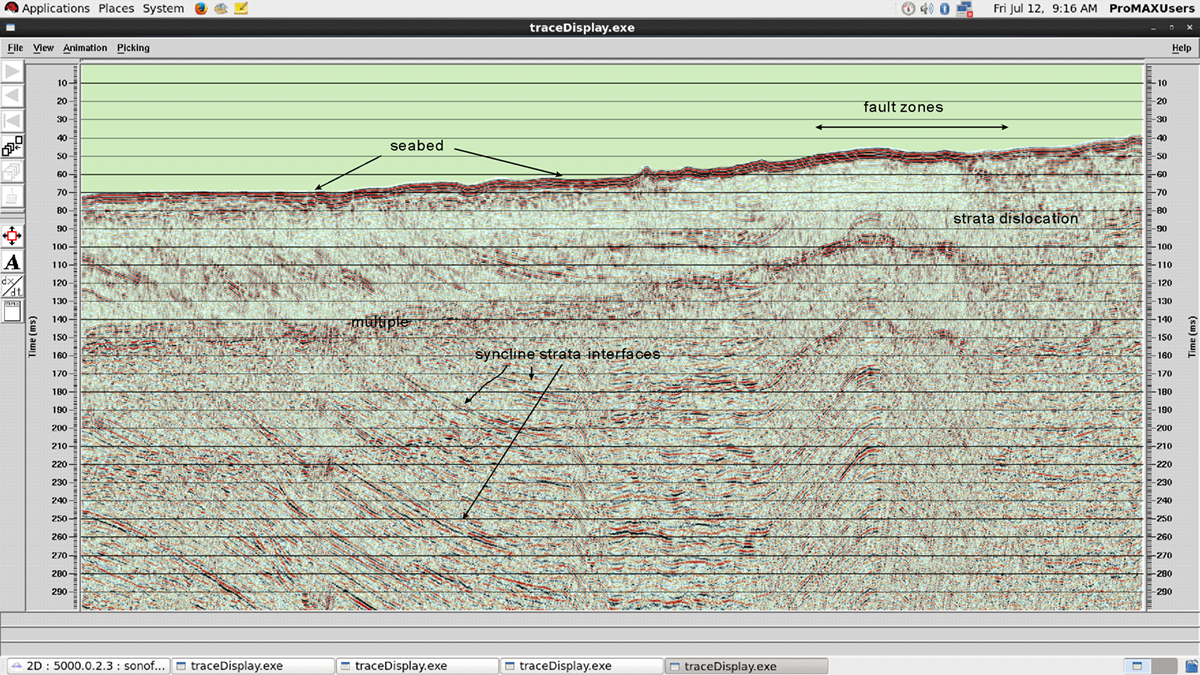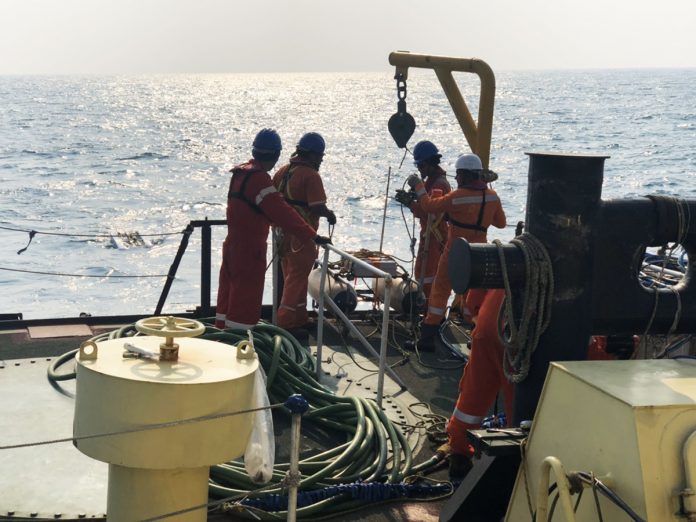Gwo-shyh Song, Associate Professor at the National Taiwan University, explains research taking place concerning ultra-high reflection seismic survey before offshore wind farm construction
Offshore wind farm construction in Taiwan is mainly conducted using base piles to penetrate the seabed 60 to 80 meters deep underground. So, when designing this type of construction, we have to understand the geological structure of the surface and depth of the seabed. This includes the properties of the seabed surface and substrate material to check if it contains soft sediment layers or hard paleo-strata; in addition, we need to find out whether there is methane gas in the thick clayey sediments that are hazardous to construction, whether the formation has a liquefied mud volcano or so-called formation fragmentation or fault zone.
Taiwan is situated in the collision zone of the Philippine Sea Plate and the Eurasian Plate such that it is a product of orogeny with high mountains. Half of the offshore wind farms are located by the West Coast of this Orogen, and near the so-call deformation front where the most active or youngest faults are located. Along these fault zones, every decade or so, a major earthquake of magnitude 6.0 or more occurs. For instance, the 921 Earthquake with magnitude 7.3 occurred in Taichung area in 1999; the Mei-lung Earthquake with magnitude 6.6 took place in Kaohsiung and Tainan area during 2016. Therefore, it is necessary to conduct a complete geophysical survey in an offshore wind farm area before construction to see if there are significant active fault zones in the area.
Reflection Seismic exploration
Reflection Seismic exploration is the main technique used to detect stratigraphic structure underneath the seafloor. This method aims to emit a certain range of frequency band of the shock wave in the water, so that the shock wave can penetrate into the seabed surface and transmit down during transmission. If a wave encounters a different density of media layer, there will be a portion of the sound wave energy reflected back to the surface of the water received by these hydrophones (or so-called streamer). Finally, we can digitise the received signals and process the data to make reflection seismic profiles.
Reflection seismic has been used for oil exploration or geological research purposes. In an engineering application, it uses an acoustic source with a higher frequency band between 100 Hz to 10kHz. For offshore wind farm construction purposes, survey companies are generally using a Negative Pulses Sparker Array of several thousand Joules energy as a seismic source (see figure 1). To have a better result detecting into the deep, a multi-channel hydrophone streamer with a length of over one hundred meters stowed behind the survey vessel is used to enhance signal strength (see figure 2). The seismic profile can be displayed in real-time on the computer screen to check the result and monitor the quality of the collected data.

Formosa I and Formosa II
In Taiwan, two offshore wind farms named Formosa I and Formosa II are located offshore of Miaoli County. In this area, an active fault named the Hsinchu Fault is shown on land and extends southwest into the construction site. To accurately locate a trace of the active fault zone and avoid putting the turbine foundation in the wrong place, Global Aqua Survey Limited was contracted by the firms Macquarie and Swancor and cooperated with the Geolantic SDNBHD, in conducting the so-called ultra-high reflection seismic survey in the area.

The survey was conducted in Autumn 2018: the survey vessel called Yu-Da 568 is owned by the Yu-ping Company. The Yu-da 568 with 499 net tonnages is 39.3m long. The total survey line is 380 kilometres. The seismic profiles can clearly indicate where the fault zone is located; shown in attached seismic profile (figure 3) and it is observed next to the folding strata which had been severely deformed under the compressive force because of mountain build.
Please note: This is a commercial profile











